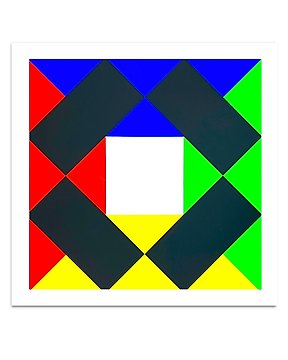
Max Bill (1908-1994) - Komposition mit weissem Zentrum
Nr. 82963451

Nr. 82963451

William Wauer: Horse
Medium: Silkscreen Print
Material: Paper
Dimensions: 22 x 26 cm
Editor: Edition Panderma, Basel
Year: 1955
Edition: This is an unnumbered copy of 230 editions
Signature: with estate stamp (Wauer)
Provenance:
Edition Panderma, Carl Laszlo, Basel
Galerie von Bartha, Basel
Private Collection, Basel
Condition / Restauration :
ok condition, some minor bends in the left area of the paper
Further Information:
A rare limited edition of the portable collection of post-war and contemporary art La Lune en Rodage III. This is an unnumbered copy of 230 editions (65 hors commerce were unnumbered) and part of the third serie of the La Lune en Rodage books. La Lune en Rodage was published in three volumes in 1960, 1965 and 1977 containing a total of approximately 180 art pieces which provide an account of the artistic avant-garde scene between the 1950s and 1970s. The art works were gathered by Carl Laslzo and included the greatest artists of the time who contributed with important pieces, often marking a turning point in their production and carriers: Enrico Castellani’s work for example is his first documented graphic work and Piero Manzoni's multiple Achrome is the only one produced by the artist.
Biography:
William Wauer
* 1866 Oberwiesenthal/Erzgebirge
† 1962 Berlin
In 1884 after he had completed his secondary school education in Dresden and Halle, William Wauer, son of a Thuringian clergyman, registered at the Dresden academy to study art. Later he transfered to the academies in Berlin and Munich.
From 1888 a very intensive and eventful part of his life followed, during which the artist lived in San Francisco, New York, Vienna, Rome, Leipzig, Dresden and other places. He worked as a publisher, art critic, feature editor and illustrator, published the monthly journal "Quickborn" and spent some time as head of the advertising department of Lingner-Werke in Dresden where he developed a famous advertising campaign for "Odol" mouthwash.
From 1900 William Wauer devoted more and more of his time to the theater. From 1905 he attended the directing class of the Berlin theater school and in 1911 sucessfully directed Herwarth Walden's pantomime "Die vier Toten der Fiametta". William Wauer's directing work is one of the first highlights of the the theater work performed by the art group "Der Sturm", which Wauer joined in 1912.
From that year Wauer also worked as film director: "Richard Wagner" was made in 1913, "Der Tunnel" in 1914-15 and "Peter Lump" in 1916. Alongside his work as a director for film and theater, the versatile artist William Wauer also dedicated himself to fine art.
In 1918 he first contributed some of his own sculptures to the 61st exhibition of the gallery "Der Sturm". William Wauer's most famous works are his portraits - H. Walden's bust is an incunable of Expressionist statuary. William Wauer's sculptures are marked by a dramatic rhythm of movement and an expressively moved, ornamental surface design. Until the gradual dissolution of the "Sturm" circle in 1924, Wauer also contributed to the "Sturm" journals, wrote books and worked at the "Sturm" art school.
In 1924 Wauer founded the "Internationale Vereinigung der Expressionisten, Kubisten, Futuristen und Konstruktivisten", which he was head of until its ban in 1933. In 1941 the Nazis classified William Wauer's art as "degenerate" and he was banned from working. After the war William Wauer's sculptures, paintings and prints were regularly shown at exhibitions. He worked as a lecturer at the West-Berlin adult education center and was member of the board of the "Verband der Berliner Bildenden Künstler". (Source: william-wauer)
Cum să cumperi de la Catawiki
1. Descoperă ceva special
2. Plasează cea mai mare ofertă
3. Fă o plată sigură